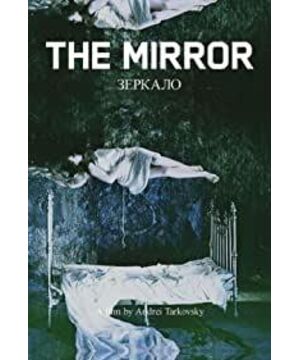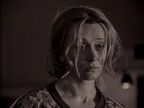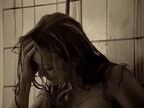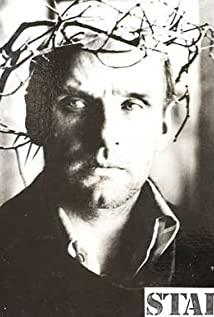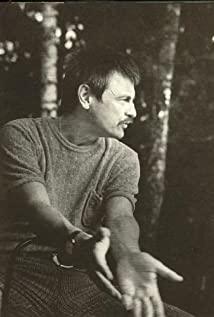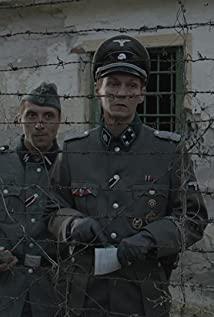The film layman's shattering thoughts watched "Mirror" for the first time, and was shocked by the flowing natural scene. Although he didn't understand the plot, his stamina was so strong that he unconsciously searched for the analysis of the work. After a long absence, I felt that I had to write something, and the enthusiasm of my research encouraged me to read the director's autobiography and other works in one breath. In the evening, after enjoying the second time with tears in my eyes, I stopped writing in the early morning, listening to the music, unable to fall asleep.
As a film layman for the first time writing a film review seriously, my film knowledge reserve is limited, and I cannot cite the works of my predecessors who have influenced Ta's film concept. Ta's is a master of unique style and enlightenment to my appreciation of art films. This is the first time I understand his creative concept with a serious attitude, and I beg for corrections and exchanges where the writing is immature.
1. Flowing natural imagery
Different fragments are intertwined, memories, reality, dreams, imagination, flashbacks. With the soothing Bach, natural scenes such as wind, snow, rain, water, fire, and fog slowly pass, and time flows in silence.
Tarkovsky used precise sensory images to inspire dream-like "recollection" experiences, even if it never happened, he felt very empathetic, and even wondered: Have I experienced this in my previous life? Even if you can't immediately accept the chaotic editing logic and the sudden voiceover of chanting poetry, you are greatly shocked by the beautiful picture that hits the heart. Perhaps this is Ta's first eviction order to audiences who are used to commercial movies like Hollywood, "You don't need to understand, you just need to feel."
Tarkovsky's fascination with nature and the supernatural is on full display in The Mirror, making it the "most Tarkovsky" film. Haiku, which outlines nature, is the source of his creative view. "What fascinates me about haiku is its pure, accurate, detailed observation of life. And the form is pure. The more accurate the image is, the less likely it is to encapsulate it in some abstract concept. Read haiku as if you were part of nature. Just as immersed in it, lost in its depths, as if lost in a universe that is bottomless and high. Poetic observations express their own attitudes toward reality. They not only observe, but day and night they search for the eternal meaning of reality. The more careful the observation, the more unique, the more unique, the closer to the image.”
The rhythm of the film is conveyed from the life of natural objects, and the water flow and water pressure can be judged from the swing of the water plants in the river. Similarly, the flow of time also means the life process itself flowing in the lens.
Ta's love for the simple and mysterious nature and the simple and ethereal haiku mood make his films full of oriental subtlety and tranquility.
“Rain, fire, water, snow, dew, wind—these are the most common natural phenomena in the environment we live in, or even the true meaning of our lives. So when I was told that it is impossible for people to simply appreciate I'm confused when there must be a deeper meaning in the natural beauty captured in a movie image. Of course rain can be used purely to indicate bad weather, to create an aesthetic atmosphere. This is not the same as having a symbolic meaning It's two different things - I don't want that."
"Mirror" is not a symbolism, it is annoying to guess the riddle from various intentions, not to mention that the director also said that there is no intention to set the answer, it is better to let yourself be driven by the emotions of the camera, and what you feel is what you get.
2. The affectionate ravings of the aphasic
If you are accustomed to the dramatic and traditional narrative style, it is difficult to understand what the movie is "about" at first glance. The protagonist's behavior and event logic are disrupted. This is the story of his memories and dreams, and he doesn't even appear on camera. This way is completely the presentation of the inner world of the protagonist. The surreal footage in the film accurately depicts subjective feelings - the young mother washes her hair unnaturally, walks through the house, it rains, the walls fall off, and the mother looks into the mirror with an aging face. The mother in labor was unaccompanied, and she saw her father gently comfort her in a trance, and she felt her body float.
"Mirror" is almost an autobiographical film of Tarkovsky. The poet's father, Arseny, leaves the family, and the mother works as a checker to raise the family alone, so that the children receive a good education. Tashi thought he was reminiscing about his childhood, but found that he was reminiscing about his mother. "She was still alive when Mirror was made. Although the film was about her, I mainly felt like I was making a film about myself at the time, as if Tolstoy wrote Childhood, Teenage, Youth. Same. It wasn't until later that I gradually realized that Mirror was about my mother, not me."
Tarkovsky edited the material for more than 20 editions, and finally the material was established and the soul was obtained. Tashi believes that "rhythm is not spliced out by metre-by-metre segments, but is facilitated by the time pressure within the shot."
"I'm not referring to the individual junctions of certain scenes, but to the scene changes of the structure itself in the transition of the bridge. There were several times when I even felt that the film could not be cut - it seemed to mean that we were shooting There are unforgivable omissions in the process. Looking around, nothing is complete, there is no inherent necessary connection, there is no logic, the difference between film editing is that it can integrate the time engraved on the fragmented film. Editing is The fragments that carry time, big and small, are assembled together. During the assembly process, the time is cut or shortened, creating a time gap, which gives people a new feeling. But as mentioned above, the arrangement of the shots The ideal is already there in the footage of the film. The editing itself does not recreate this quality, it just expresses what is already in the shot. The editing should be anticipated at the time of shooting, and should be Planning. Editing needs to deal with the length of time and the time tension in the recording, not abstract symbols at all, not painted objects, not elaborately embellished scene arrangements, not the well-known film theory "two equivalent concepts in The so-called 'third meaning' arises from the collision", but it comes from the diversity of life recorded in the lens."
This self-contained "sense of time" may be derived from the director's grasp of the atmosphere and subtle emotional changes.
Image by image, like pieces of a puzzle, Tarkovsky smashed and reassembled various pasts with his mother. He kept sinking into memories—from his mother waiting for his father on the fence, his mother growing old in the mirror, his mother watching the house on fire, his mother rushing to the printing house thinking the proofreader was wrong, the fleeing crowd, the war, his mother sending him to school, his father and mother Fighting for custody, the mother talks to him after the operation, the mother sees the father during childbirth, the mother takes him to the countryside to escape, the mother is forced to kill chickens, the mother is in love with the father, the old mother holds the hand of the young Alyosha and walks Fields at dusk.
It can be understood in this way, just like the man receiving stuttering treatment in the beginning of the film, the protagonist Alyosha's feelings for his mother are so strong that it is difficult to express clearly. He kept trying to spell out his mother from memory, only to get more and more confused. With the increase in the number of puzzle pieces, we have already thought of the complete image of the mother from the blank, incomplete, and deformed pieces of the puzzle, but the protagonist is still rehearsing clumsily, and the audience suddenly has an indescribable empathy, wanting to hug the fool The sincere young man said, "Stop fighting, I already understand." Memories are confusing and difficult to straighten out, but from his raving emotions, he can experience the flow of emotions with empathy. If Alyosha said emotionally, "My mother was not easy, she sheltered us in those unfortunate times. When my mother was abandoned, I was three years old and my sister was only one and a half years old. She raised us all alone, She never remarried in her life because she loved her father. She was such a brave, holy, and unworldly woman who carried the burden of the family by herself." Instead, she deliberately. For example, in "The Lover", the narrative of "I" is interlaced in time and space, and it is difficult to distinguish between true and false. It is reflecting that "I" is repeatedly recalling and beautifying the lover. So the more chaotic Duras' narrative, the more difficult it is for the reader to distinguish between what happened and what was falsified by memory, the more immersed in emotional ups and downs, the more empathy it becomes. "Reality" is no longer important. Only by abandoning the reality of time and space can we achieve emotional reality, which is the reality that the artist wants to express.
3. The ambiguity and complexity of poetry
Bergman praised Tarkovsky for "creating a brand-new film language, truly stepping into the essence of film, capturing life like a reflection and a dream ." Tarkovsky is a poet who writes poetry in film. He believes that the world It is difficult to explain and full of uncertainty. It is the ambiguity and blank space of the picture that reproduces the complex world and gives the viewer more room for imagination. Just like poetry, ambiguity represents openness, complexity, and timelessness, and that is what comes into being—poetic.
Tarkovsky calls himself a director who explores his inner spiritual world. For his favorite painters, writers, and musicians, Tarkovsky calls him a real poet. Shi is an obscure junior who repeatedly appears in Leonardo da Vinci's albums. As for his love for Leonardo, he said, "If we try to analyze the composition of this portrait of Leonardo, it will be in vain. Or rather, nothing can be explained. The emotional impact of this portrait on us is because we cannot possibly find any particular law in it, nor can we necessarily capture the details from the whole, take our preferred moments and completely own them, so that we can see the to achieve some balance between the images. It opens up the possibility for us to interact with the infinity, a grasp of the true artistic image of the highest mission...in the infinity—our intellect and emotion galloping with joy.
"The face of a young woman depicted by Leonardo da Vinci is at once noble, but also seems to indulge in vulgar infidelity. The portrait allows us to see the infinite possibilities. When we go to capture its essence, Again, we will fall into an endless labyrinth with no way out. And once we can’t see through it, we will have a real enjoyment. A true artistic image can simultaneously awaken the complex feelings of conflicting and mutually exclusive feelings in the recipient.”
In the creation of the constituent elements of film aesthetics, Tashi also follows the simple poetry:
"Electronic music has endless potential in film. We wanted the sound to be close to earthly reverberations, full of poetic insinuations, murmurs and sighs. It should both convey a hypothetical reality and accurately recreate a person The state of mind. Once we can hear its essence and realize how it was made, the effect of this sound is no longer there. So Artemyev had to try a lot of complicated equipment, and finally finally Made the effect we wanted. The 'chemical' roots of electronic music must be removed so that we can hear the world's most original notes. It can hide behind the noise and exist unobtrusively. Just like nature The murky sound in the . . . electronic music is like human breath at times."
"The activity of the color effects should be neutralized, with alternate color and monochrome scenes to distract and reduce the impression of the full color spectrum. But shouldn't the lens faithfully record life on film? Why? Color lenses give people an incredible sense of falsehood? This is because of the lack of the artist's point of view in the color accurately reproduced by the machine. The artist has lost his proper organizational function and the possibility of choice at this level. It has a unique development logic The film color score of the film is missing, stripped from the director in the technical process. As a result, the director is not able to personalize and selectively re-examine the surrounding color. Oddly, although the world around us is in color , black and white film is closer to the psychological, natural and poetic artistic truth based on our visual foundation (not just auditory). In essence, true color film is the result of the struggle with color film technology and all colors. "
Like a well-trained conductor, Tarkovsky organizes, structures, co-ordinates, and coordinates all elements of the film, capturing and reproducing dreams, so as to obtain the poetic harmony that belongs to the film.
4. Stream of Consciousness Narrative Links the Island of Memory
With sharp and simple personal aesthetic experience, Tarkovsky connects long shots according to the inner emotional flow, showing the flow of time. Actors don't act real, they put actors in situations and feel real, so actors don't even know what to act next. Tarkovsky is like a crazy experimenter. He does not prepare specific scripts in advance, but creates the scenes in his impressions and captures the artistic conception according to the aesthetic intuition generated by the built scenes and natural scenes.
"If an actor has clearly defined the film's conception and intention in advance and set his own role, then he has lost the natural and unconscious state of performance. The director needs to guide the actor's state and ensure that this state can continue. Shooting During the process, I try to avoid long discussions with the actor about the character. I am against letting the actor know the whole picture in advance of the whole movie, and sometimes even the next scene immediately after him. In my opinion , the most ideal form of film is documentary. This is not a film shooting technique, but a process of rebuilding and reshaping life.”
“When we set out on Mirror, we in principle intentionally avoided pre-designing the footage before the footage was shot. I think it’s important to figure out how the film “automatically” takes shape under what conditions—from the shoot itself, The communication with the actors, the construction of the set and the adaptation to the next scene. We did not pre-conceive the visually complete shots and clips, but we are very aware of the surrounding atmosphere and mental state, which requires Corresponding with an accurate image. If I "see" something before shooting, I think it is probably closer to the mental state, that is, the inner tension of the relevant scene and the psychology of the characters."
"Acting with one's nature" and "no rules", much like the expression technique of stream of consciousness, is a very high test for the director's aesthetic genius. Only video artists with unique spiritual temperament can master stream-of-consciousness editing.
It seems paradoxical that Tarkovsky, such a subjective, emotional, poetic director, admires the power of the documentary. "My ideal shooting process should be: the director prepares millions of meters of film, and systematically records every minute and second of a person's life, such as from birth to death. Then, he records the millions of meters of film. Editing a long film, the final product is a film with a length of more than 2,000 meters, which is an hour and a half of screening time. I often wonder, if different directors process the film with a length of millions of meters, what will happen to the film How many different versions of the movie have appeared!"
Tarkovsky once found the footage of the Red Army's Long March from thousands of films in the database, and was deeply shocked by it, making it the core of the film. Just like "Mirror", subjective reality and objective reality are combined: wars, hot air balloons, refugee crowds, frontier confrontations, they are so weighty. Like Bresson's photography: the old photos frozen in time, as if you can hear the playful children of the past and the sound of the rushing wooden wheels running over.
Perhaps because of his fascination with the "sense of time" brought about by documentary, Tashi created the theory of "carving time":
"The rhythm reflects the director's understanding of life and the pursuit of "time", which is a natural existence in the film. I think that time should be an independent and dignified flow in the camera, so that there is no need to rush and blunt approach, the point of view can find its place in the film. So my job is to create my own unique time rhythm, through the lens to make the audience feel the flow of time - from lazy, hypnotic, to rapid , stormy - and the audience will have different perceptions of their own. My professional aspiration is to establish my own unique time flow, and convey my own feelings about the flow of time through the lens - from lazy and confused, To be violent and violent. How who thinks, who sees, who feels... Segmentation, splicing - breaking the flow of time, interrupting time and creating some new characteristics of time. Distorting time is also performance A rhythmic approach. Sculpting time!"
The real and dream-like clips come from the director's personal memory, such as the horse nibbling on the falling apples on the beach, the foggy forest, the wind blowing through the buckwheat field, and the boy happily saying to his mother "It's the cuckoo!". The director uses the pictures to inspire the audience's memory, trying to connect the daily memory, because of the subtle and unusual, unique sensory experience, and the vague impression that once inspired inexplicable emotions in the memory, but is hidden in the subconscious. I still miss the water droplets that sparsely dripped between the eaves after the rain, ding dong on the tin bucket; picking up the beautiful soft stones in the stream under the sun, and grinding the mud; walking with my sister and grandma on the endless tar On the way, there were strange courtyard walls and street trees on both sides; the stained glass windows, like beautiful artificial gems, were neatly inlaid on the scattered farmhouses, and suddenly they were given a sweet and juicy sami of peaches; boredly eating biscuits during long prayers; wandering among dwarf wildflowers, imagining stepping into a secret garden alone... Trivial impressions make up islands in memory, in survival masks, inward pressure, The virtual and the snake were silently sealed. It is those real and poetic shots that gently open up the fragmented and "inhumane" life experience. And it is such a subtle experience that virtually lays the foundation of life and has an impact on it to this day.
5. Mirrors refract space and time
The mirror appears several times in the film. Mirrors reflect time and refract time and space. I personally think it is a prop that shows time and connects past and present. At the beginning of the film, the young mother sees her aging self through the mirror; in the middle of the film, the young Alyosha stares at herself in the mirror of the country hostess's house. There is also an invisible mirror, from the young mother to the wife to take a photo with the old mother, and the mother at the end of the love to look at the twilight and crooked mother. At the end of the second viewing, I was greatly shocked, and the stare was absolutely divine: the young Alyosha held a feather and called to his mother, the old mother smoked a cigarette and looked into the distance - the young mother left her father's chest and looked into the distance - the sunset On the field, the old mother and her young children walked silently through the tall buckwheat, like a microcosm of the second half of her toiled life-the mother shed tears, foresaw the result of her lonely marriage and raising two children alone, or To shed happy tears for the imaginary future? After witnessing the ending, I returned to the beginning of hope. I thought of "The Sun Also Rises". The mad mother is old, desperate, crazy, and thrown into the river. At the end, when she returned to a young age, she learned that she was abandoned by her husband, gave birth in pain on the train back, and her child fell off. In the car, she ran to look for it, and saw the child waving his hands and feet comfortably on the road paved with flowers, the mother was full of hope, hugged the child and shouted to welcome the new sun. Perhaps the destroyed and broken beauty returns to its original integrity, and it is quite tragic to look back at the golden age at the end of the day.
The method of "Mirror" is pioneering. The film industry blocked it from winning, critics accused it of being incomprehensible, audiences criticized it as "indecent", and the documentary clips in it were blocked. Tarkovsky himself had to wander in Italy. For various misunderstandings, Tarkovsky angrily wrote, "The artist has no right to distort the audience's acceptance and reduce the work to a certain abstract average. This will only lead to the degeneration of art. Furthermore, We are all looking forward to the prosperity of art, not only believe in the potential of artists, but also believe in the rising spiritual needs of the public. In any case, we are willing to believe... Marx said: "To appreciate art, you must be a person with artistic cultivation. "The artist cannot set himself the goal of being "understandable" by the audience: this is as absurd as the artist deliberately setting himself the goal of being "understood"..."
Poetic documentary, weaving time. The sincere artistic heart makes Tarkovsky's pictures penetrate time, cross national borders, and arrive at isolated islands of memory, completing a fictional real experience.
Reference books: "Sculpting Time", "My Immortality Is Enough"
Reference Analysis: AB Cinema at Station B
View more about Mirror reviews


